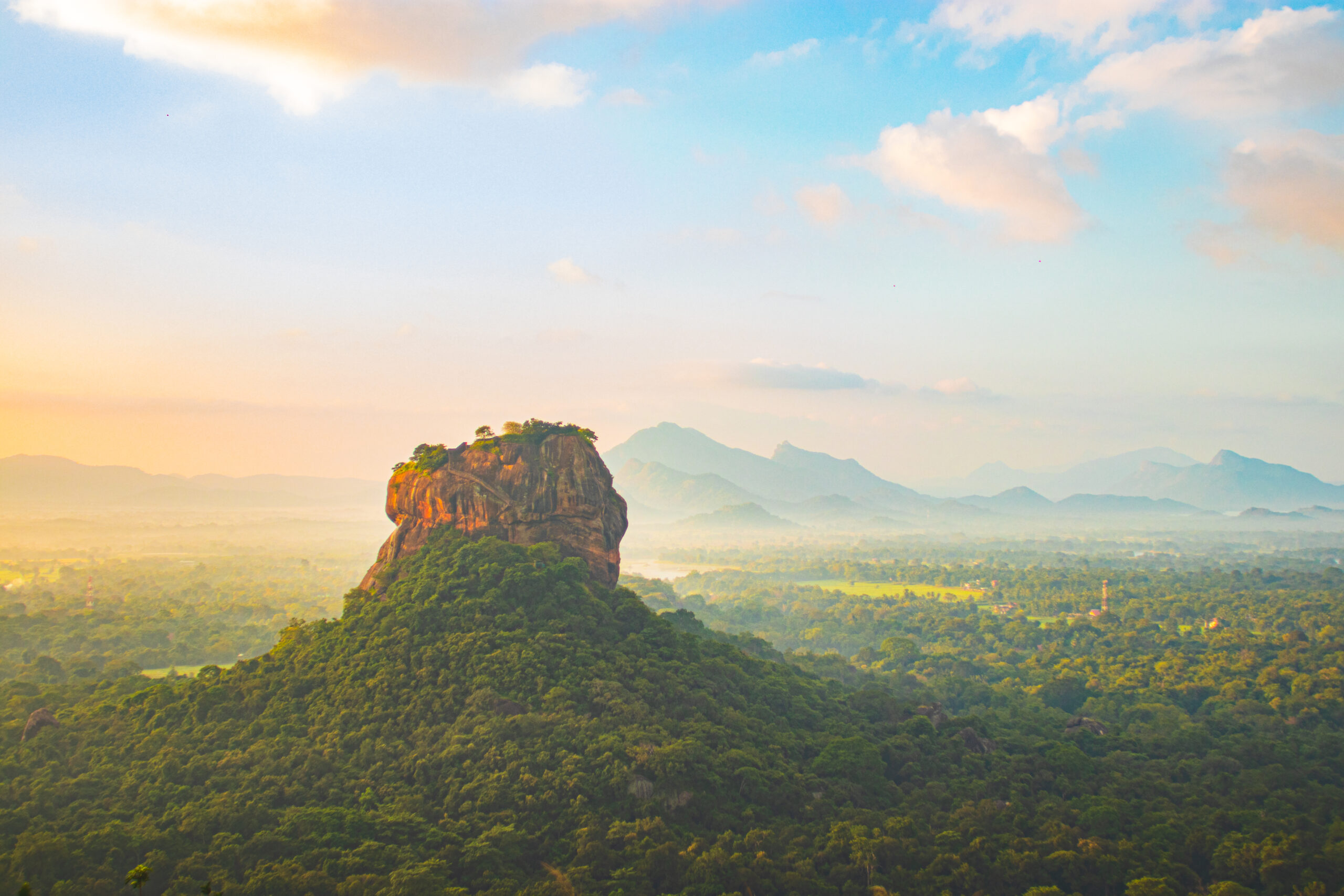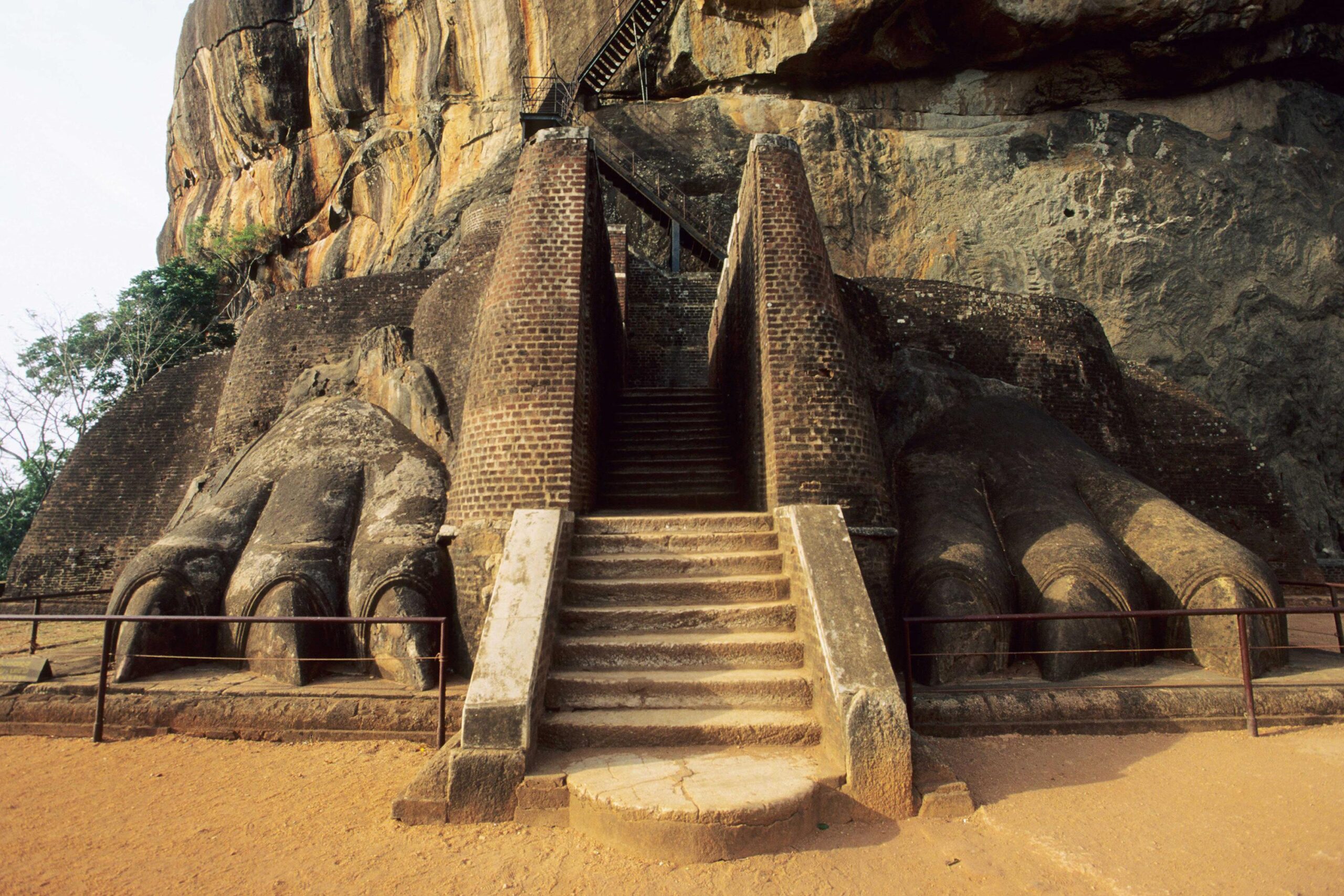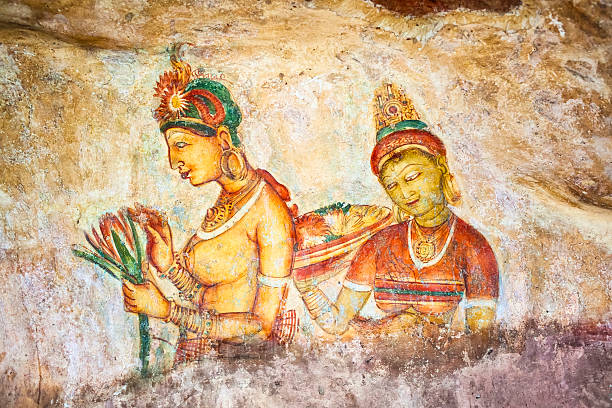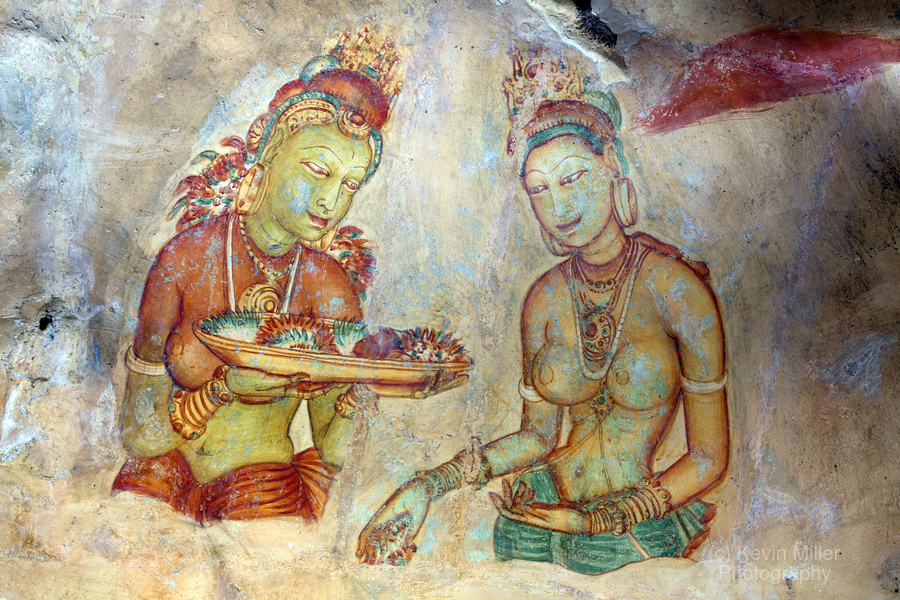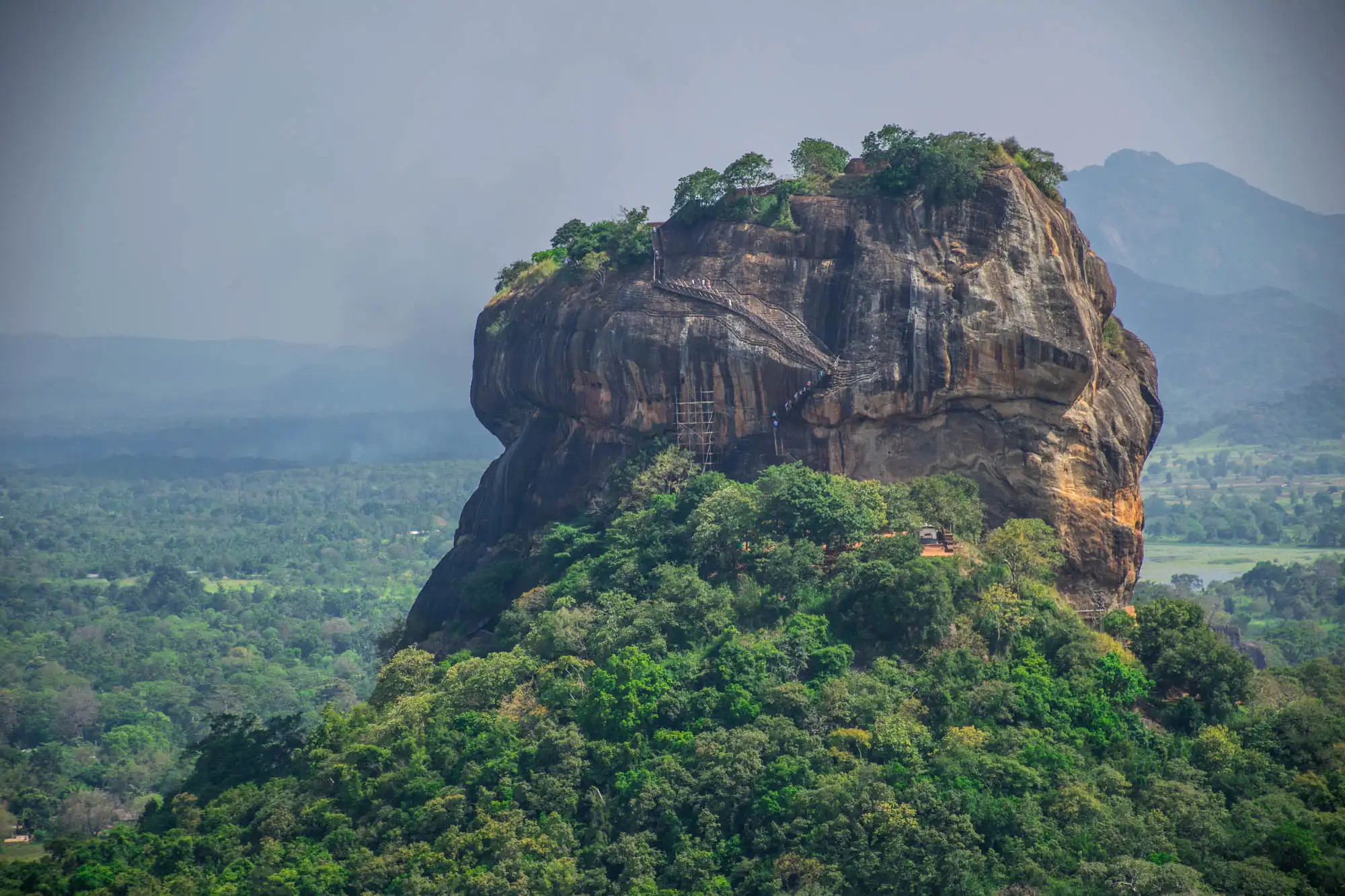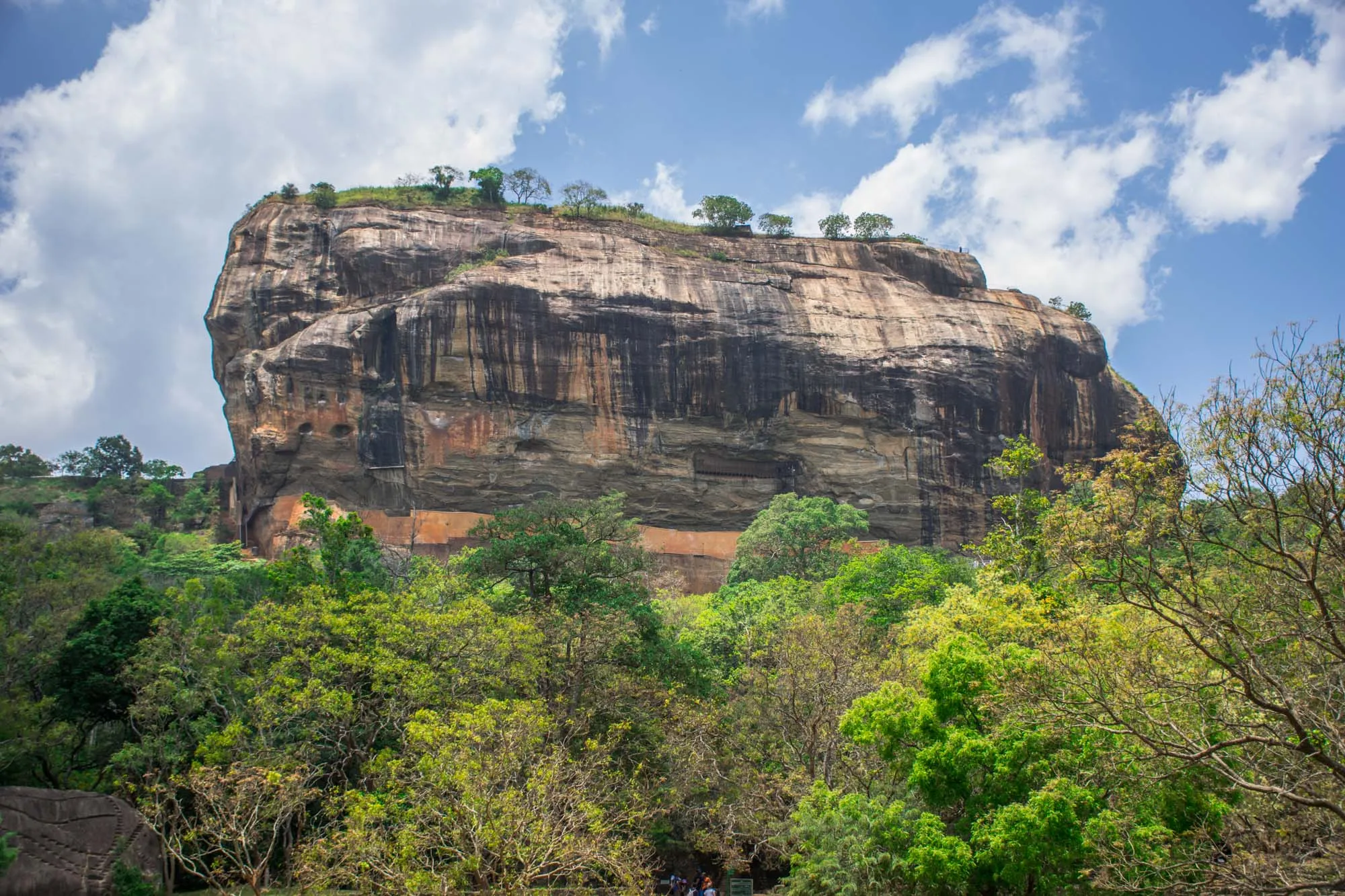Sigiriya
Sigiriya, a UNESCO World Heritage Site, is a stunning 5th-century rock fortress in Sri Lanka. Renowned for its lion-shaped gateway, ancient frescoes, and innovative water gardens, it offers breathtaking views and showcases the brilliance of ancient Sri Lankan craftsmanship.
Know before you go
15 km northeast of Dambulla, Sri Lanka.
○ By Vehicle 30minute drive from Dambulla
○ By Tuk-tuk convenient and affordable ,a popular choice for travellers ○ By public transport buses available from Dambulla to Sigiriya Junction, Followed by a short walk or tuktuk ride.
Daily 5.30AM – 5.00PM
Early Morning or Late afternoon to avoid crowds and to enjoy cooler weather.
- Foreigners: $30 for adults, $15 for children under 12.
- Sri Lankans: Rs. 100 for adults, Rs. 50 for children.
- Children under 6: Free.
- On-site restrooms.
- Drinking water available at stalls outside the gate.
- Souvenir shops and snack vendors near the parking area.
- Wear comfortable shoes (climbing Sigiriya involves over 1,200 steps).
- Carry water, sunscreen, and a hat for protection from the sun.
- Visit the Sigiriya Museum near the entrance for insights into Sigiriya’s history.
- Avoid feeding monkeys, as they can become aggressive.
- Wasp Alert: Avoid loud noises near the summit where wasp nests are found. Follow instructions from staff regarding wasp-prone areas. If attacked, calmly cover your face and move to safety. Emergency kits are available on-site.
Sigiriya, also known as Sinhagiri or Lion Rock, is an ancient rock fortress located in the northern Matale District near Dambulla, Central Province, Sri Lanka. Rising 180 meters (590 feet) above the surrounding plains, this UNESCO World Heritage Site is celebrated for its historical, archaeological, and artistic significance. Constructed during the reign of King Kashyapa (477–495 AD), Sigiriya exemplifies advanced urban planning, engineering, and artistic expression from the ancient world.
Historical Significance
The site’s origins trace back to prehistoric times, with evidence of Mesolithic habitation at the Aligala rock shelter, dating to around 3000 BC. By the 3rd century BC, Buddhist monks established monasteries in the area, carving rock shelters with drip ledges for their use.
In 477 AD, King Kashyapa, after usurping the throne from his father, King Dhatusena, moved the capital to Sigiriya. He transformed the rock into an impenetrable fortress and luxurious royal residence. The site featured elaborate water gardens, palaces, and frescoes. A lion-shaped gateway halfway up the rock inspired the name “Sigiriya,” meaning Lion Rock.
King Kashyapa’s reign ended in 495 AD when he was defeated by his half-brother Moggallana in battle. Following his death, Sigiriya was converted into a Buddhist monastery, which thrived until the 14th century.
Sigiriya, also known as Sinhagiri or Lion Rock, is an ancient rock fortress located in the northern Matale District near Dambulla, Central Province, Sri Lanka. Rising 180 meters (590 feet) above the surrounding plains, this UNESCO World Heritage Site is celebrated for its historical, archaeological, and artistic significance. Constructed during the reign of King Kashyapa (477–495 AD), Sigiriya exemplifies advanced urban planning, engineering, and artistic expression from the ancient world.
Historical Significance
The site’s origins trace back to prehistoric times, with evidence of Mesolithic habitation at the Aligala rock shelter, dating to around 3000 BC. By the 3rd century BC, Buddhist monks established monasteries in the area, carving rock shelters with drip ledges for their use.
In 477 AD, King Kashyapa, after usurping the throne from his father, King Dhatusena, moved the capital to Sigiriya. He transformed the rock into an impenetrable fortress and luxurious royal residence. The site featured elaborate water gardens, palaces, and frescoes. A lion-shaped gateway halfway up the rock inspired the name “Sigiriya,” meaning Lion Rock.
King Kashyapa’s reign ended in 495 AD when he was defeated by his half-brother Moggallana in battle. Following his death, Sigiriya was converted into a Buddhist monastery, which thrived until the 14th century.
The site is divided into distinct sections:
The Upper Palace: Situated atop the rock, it includes remnants of cisterns and royal chambers.
Mid-Level Terrace: Features the Lion Gate and the famous Mirror Wall adorned with ancient graffiti.
Water Gardens: A series of symmetrical pools, fountains, and channels, demonstrating advanced hydraulic engineering.
Frescoes: The western rock face was once a massive gallery of painted images, depicting graceful women, thought to be celestial nymphs or members of the royal court.
Sigiriya’s frescoes are celebrated for their vibrant colors and unique painting techniques. The figures, painted in sweeping strokes, convey a lifelike volume and depth. They remain an unparalleled example of Sri Lankan artistry from the Anuradhapura period.
Rediscovered by Major Jonathan Forbes in 1831, Sigiriya gained archaeological attention in the late 19th century. Today, it stands as one of Sri Lanka’s most iconic landmarks, attracting visitors from around the world. Its blend of history, art, and natural beauty makes it an enduring symbol of the island’s rich cultural heritage.
Sigiriya is more than just a rock; it is a testament to human ingenuity and creativity, standing tall as a legacy of Sri Lanka’s ancient civilization.
The Sigiriya frescoes, painted over 1,600 years ago, are among the finest examples of ancient Sri Lankan art. Found on a sheltered rock face of the Sigiriya fortress, these paintings depict celestial maidens, often referred to as the “Sigiriya Damsels” or “Cloud Maidens.”
These vibrant frescoes showcase women adorned with intricate jewelry, flowing garments, and delicate floral arrangements. Their graceful expressions and detailed artistry highlight the advanced painting techniques of the time. The frescoes are believed to represent either divine beings from Buddhist mythology, apsaras (heavenly nymphs), or members of King Kashyapa’s royal court.
Despite centuries of exposure, these artworks have retained their brilliance, thanks to natural pigments and skilled craftsmanship. The Mirror Wall, once so polished that the king could see his reflection, bears ancient graffiti left by visitors centuries ago, praising the beauty of the frescoes.
Sigiriya’s wall art remains a captivating symbol of Sri Lanka’s artistic and cultural legacy, attracting history enthusiasts and art lovers from around the world.
The Sigiriya frescoes, painted over 1,600 years ago, are among the finest examples of ancient Sri Lankan art. Found on a sheltered rock face of the Sigiriya fortress, these paintings depict celestial maidens, often referred to as the “Sigiriya Damsels” or “Cloud Maidens.”
The Sigiriya frescoes, painted over 1,600 years ago, are among the finest examples of ancient Sri Lankan art. Found on a sheltered rock face of the Sigiriya fortress, these paintings depict celestial maidens, often referred to as the “Sigiriya Damsels” or “Cloud Maidens.”

